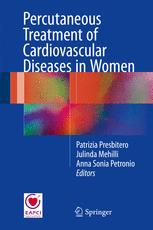

Most ebook files are in PDF format, so you can easily read them using various software such as Foxit Reader or directly on the Google Chrome browser.
Some ebook files are released by publishers in other formats such as .awz, .mobi, .epub, .fb2, etc. You may need to install specific software to read these formats on mobile/PC, such as Calibre.
Please read the tutorial at this link: https://ebookbell.com/faq
We offer FREE conversion to the popular formats you request; however, this may take some time. Therefore, right after payment, please email us, and we will try to provide the service as quickly as possible.
For some exceptional file formats or broken links (if any), please refrain from opening any disputes. Instead, email us first, and we will try to assist within a maximum of 6 hours.
EbookBell Team

0.0
0 reviewsThis book describes a wide range of interventional procedures currently employed in the treatment of cardiac diseases in women with the aim of enabling not only interventional cardiologists but also cardiologists and cardiac surgeons to refine their approach to female patients and thus improve outcomes. The book reflects the increasing awareness of gender differences with regard to coronary artery disease and structural valve heart disease. Examples include myocardial infarction, which carries a worse prognosis in women in part because they suffer from this disease mostly in the 7th decade of life, present more frequently with hemodynamic instability and later from symptom onset, and have fragile, small and tortuous coronary arteries that are more technically demanding in the context of primary percutaneous coronary intervention. Another example is symptomatic aortic stenosis, which carries a better prognosis in women who undergo trans-catheter aortic valve implantation partially due to a better annulus-prosthesis match, which leads to less residual paravalvular regurgitation, better left ventricular function and lower aggregation of comorbidities. Further, in women left ventricular response to aortic stenosis is typified by muscle hypertrophy with a small ventricular cavity. These differences are reflected in the clinical manifestations and their impact on diagnosis, treatment, and choice of tools and devices for use in interventional procedures. By explaining the at times subtle variances in disease and treatment techniques for female and male patients, this book will help practitioners select the most appropriate procedures and materials in a range of settings.